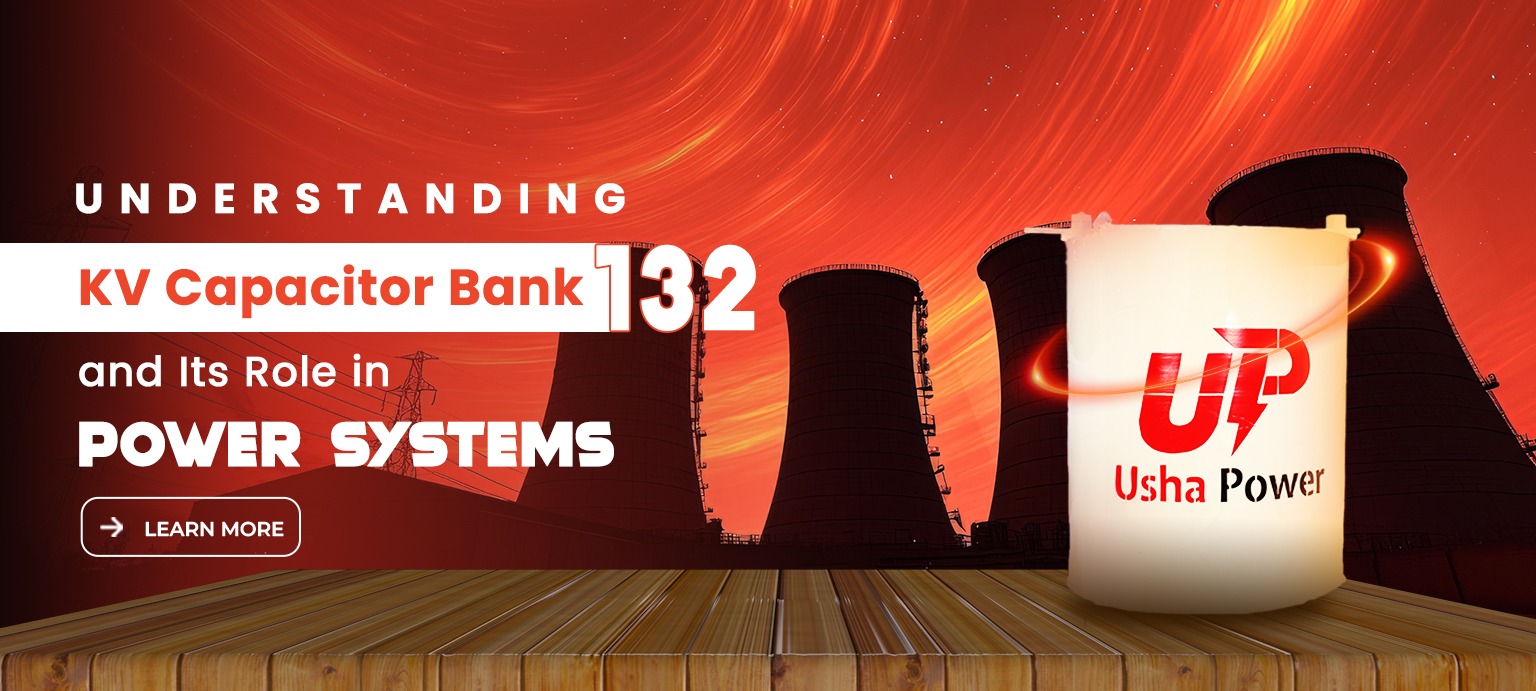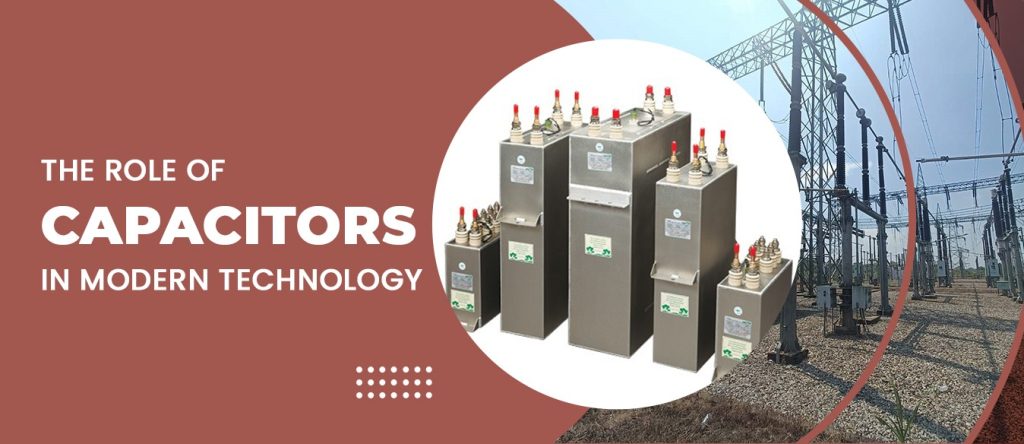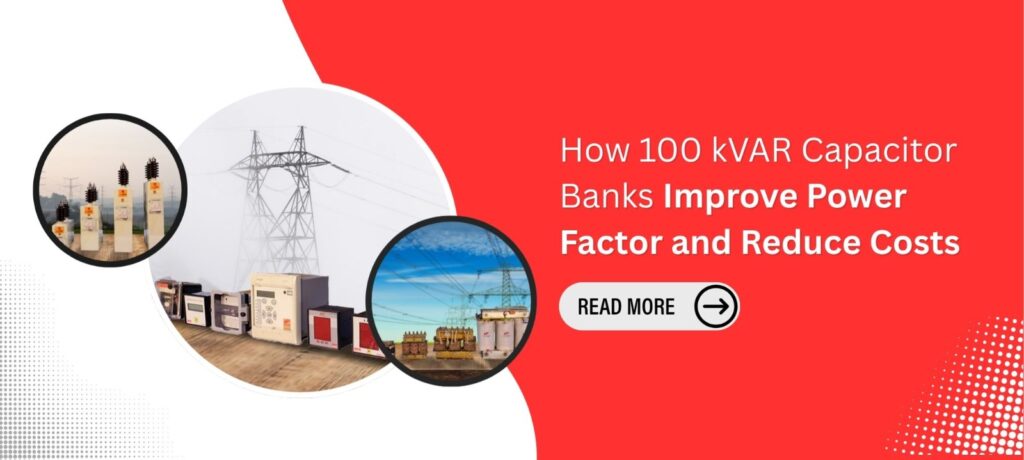In modern power systems, maintaining voltage stability and improving power quality are crucial for smooth and efficient electricity transmission. As industries continue to grow and energy consumption rises, the demand for equipment that ensures better voltage regulation and power factor correction also increases. One such important component used in high-voltage networks is the 132 kV capacitor bank. It plays a significant role in enhancing the efficiency of power transmission and distribution systems. To understand how it works and why it is vital, it is essential to look into its design, functionality, and real-world applications in power networks.
What is a 132 kV Capacitor Bank?
A 132 kV capacitor bank is a group of capacitors connected in a specific arrangement to operate at a voltage level of 132 kilovolts. It is used primarily for reactive power compensation and power factor improvement in high-voltage transmission systems. In simpler terms, it stores electrical energy temporarily and releases it when needed, helping to maintain voltage levels across the network. These capacitor banks are usually installed in substations or transmission yards where voltage fluctuations and reactive power demand are more common. By supplying the necessary reactive power locally, the capacitor bank helps reduce the burden on generators and transmission lines.
Working Principle of a 132 kV Capacitor Bank
The working principle of a 132 kV capacitor bank is based on the fundamental property of a capacitor—to store electrical energy in an electric field and release it when required. When connected to a power system, it provides leading reactive power, which helps in offsetting the lagging reactive power caused by inductive loads such as motors, transformers, and transmission lines. As a result, the overall power factor of the system improves. This not only reduces power losses but also ensures that voltage levels remain within the desired range. The capacitor bank automatically comes into operation when system voltage falls below a certain threshold and switches off when the voltage returns to normal, ensuring balanced reactive power flow.
Components of a 132 kV Capacitor Bank
A typical 132 kV capacitor bank consists of several components designed to ensure safety, reliability, and performance. The main components include capacitor units, discharge resistors, current-limiting reactors, circuit breakers, potential transformers, and protective relays. Each capacitor unit contains multiple elements connected in series and parallel to achieve the required voltage and capacitance. Discharge resistors are used to safely discharge stored energy after the bank is de-energized. Current-limiting reactors control the inrush current during switching operations, preventing mechanical or electrical damage. The protection system ensures that faults like overvoltage, unbalance, or overcurrent are detected quickly to prevent equipment failure.
Importance of Reactive Power Compensation
Reactive power plays an essential role in maintaining voltage stability in electrical networks. However, excess reactive power demand leads to inefficient energy use and voltage drops. The 132 kV capacitor bank addresses this issue by supplying reactive power locally, reducing the reactive load on generators and transmission lines. This results in improved system voltage, better power factor, and reduced energy losses. Without adequate reactive power compensation, the transmission network would experience frequent voltage fluctuations, increased losses, and potential overloads on transformers and cables. By using capacitor banks, utilities can ensure a more stable and reliable power supply to both industrial and commercial consumers.
Role of 132 kV Capacitor Bank in Power Systems
The role of a 132 kV capacitor bank in power systems extends beyond simple voltage correction. It contributes to overall grid stability by balancing reactive power flow across long transmission lines. In large-scale power systems, where electrical loads vary continuously, maintaining a steady voltage is a constant challenge. The capacitor bank helps mitigate this by injecting reactive power during heavy inductive loading conditions. It also minimizes transmission losses, enhances voltage regulation, and supports efficient energy delivery to distant load centers. Moreover, by improving the power factor, it allows better utilization of transmission capacity, reducing the need for costly infrastructure upgrades.
Installation and Configuration
The configuration of a 132 kV capacitor bank depends on system requirements and design standards. Generally, they are arranged in single-star or double-star configurations. In a single-star setup, the neutral point is grounded, which ensures safety and allows for easy fault detection. A double-star configuration, on the other hand, includes an ungrounded neutral and is used where system balancing is critical. Installation involves placing capacitor units in metal-enclosed or outdoor frameworks, equipped with necessary isolators, reactors, and protection devices. The entire system is tested for insulation resistance, voltage withstand capacity, and unbalance protection before being commissioned into operation.
Protection and Control System
Protection is a key aspect of operating a 132 kV capacitor bank safely. Unbalanced conditions, overvoltage, or harmonics can lead to overheating and damage to capacitor elements. To prevent this, protection systems like unbalance relays, overcurrent protection, and discharge resistors are used. Voltage and current transformers continuously monitor system parameters, sending signals to the control unit in case of abnormalities. Modern capacitor banks are often integrated with automatic control panels that regulate switching operations based on real-time system voltage and reactive power demand. This ensures efficient performance without the need for manual intervention.
Advantages of Using 132 kV Capacitor Banks
The use of a 132 kV capacitor bank offers multiple advantages to power utilities and industrial networks. It significantly improves voltage regulation and reduces transmission losses. By supplying local reactive power, it enhances the power factor, which in turn lowers penalties imposed by utilities for poor power factor performance. Additionally, it improves the stability and reliability of the overall power system, allowing other equipment to function efficiently. The long-term benefits include lower operational costs, extended equipment life, and better energy utilization across the network.
Maintenance and Safety Practices
Regular maintenance is essential to ensure the reliable operation of a 132 kV capacitor bank. Periodic inspection of capacitor units, connection points, and insulation resistance helps in early detection of potential issues. It is also important to check for oil leakage in capacitor units, proper functioning of discharge resistors, and correct relay settings in the protection system. Safety measures should include grounding of equipment, ensuring all energy is discharged before maintenance, and maintaining adequate clearances. Since the equipment operates at high voltage, only trained professionals should handle maintenance and testing procedures to prevent accidents.
Challenges and Precautions
Although the 132 kV capacitor bank offers several benefits, it also comes with challenges. Switching operations can cause transient overvoltages and high inrush currents, which may affect nearby equipment. To minimize these effects, reactors and surge arresters are used. Harmonics generated by non-linear loads can also interact with capacitor banks, leading to resonance conditions. Hence, harmonic analysis and proper filtering are necessary during the design phase. Additionally, environmental factors like moisture, dust, and temperature variations should be monitored, as they can affect insulation and performance.
Final Thoughts
The 132 kV capacitor bank is a critical component in modern power transmission and distribution networks. Its ability to supply reactive power, stabilize voltage, and improve overall power quality makes it indispensable for maintaining an efficient electrical system. From design and configuration to operation and maintenance, every aspect of a capacitor bank is aimed at enhancing reliability and performance. As power demands continue to rise globally, the use of high-voltage capacitor banks will remain essential for ensuring energy efficiency and system stability across industrial and utility networks.
If you own or manage an industrial or commercial setup and are looking for robust, high-quality capacitor banks, Usha Power is committed to delivering dependable and efficient power solutions. Our products are engineered to perform reliably in demanding environments, helping industries achieve greater operational stability and reduced energy losses. With a strong focus on precision engineering and customer satisfaction, we ensure that every installation enhances overall power system performance. Explore our complete range at https://ushapower.com to strengthen your electrical network.




